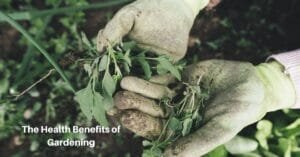Spinach is a powerhouse addition to salads, smoothies, and a wide range of dishes. For maximum success, it’s important to understand the proper care and harvesting of this leafy vegetable. Let’s explore the steps you need to take for a rich, delicious yield, from seed to plate!
Choosing the Right Time to Plant
Timing is vital when it comes to planting spinach. Spinach thrives in cooler temperatures. It’s best to plant spinach in early spring. Or wait until late summer if you’d like a fall harvest. In regions with milder climates, you can even grow spinach throughout the winter.
Preparing the Soil
Well-drained, fertile soil is the best for growing spinach. Before planting, work the soil to a depth of about 6-8 inches, removing obstructions. Mix compost into the soil for better structure and nutrients. If you don’t have compost, a well-balanced fertilizer will do the trick.
Planting Spinach Seeds
Spinach seeds can be sown directly into the garden bed. Sow the seeds about 1/2 inch deep and space them about 1-2 inches apart. If you’re planting multiple rows, space the rows about about a foot to a foot-and-a-half apart.
Order Spinach Seeds Online
Sunlight Requirements
Spinach thrives in partial shade to full sunlight. It can bolt (go to seed) quickly in hot weather. If you’re growing spinach in the warmer months, consider providing some shade during the hottest part of the day to prevent this.
Fertilizing and Watering
Spinach benefits from moderate fertilization. This is important to support its leafy growth. During the growing season, side-dress the plants with additional nitrogen-rich fertilizer every 3-4 weeks to increase the leafy production.
Spinach also needs consistent moisture. Water the plants regularly, keeping the soil consistently moist. Mulching can help retain soil moisture, suppress weed growth, and control the temperature.
Thinning and Care
Once spinach seedlings have emerged and developed their first true leaves, thin them to the recommended spacing. Crowded plants can lead to competition for nutrients and inadequate air circulation, increasing the risk of disease.
The thinned plants don’t have to go to waste; you can enjoy them as tender baby spinach leaves.
Pest and Disease Management
Spinach is generally resistant to pests and diseases, fortunately. But it’s still important to keep an eye out for common garden problems. Aphids and leaf miners are occasional pests that can affect spinach. You could consider an insecticidal soap or introducing beneficial insects if you face these pests.
Harvesting Spinach
Spinach leaves are typically ready to be harvested when they are large enough to use, usually about 4-6 weeks after planting. Harvest by cutting individual leaves. Or you can use a “cut-and-come-again” approach, where you trim the outer leaves, allowing the inner leaves to continue growing.
To avoid bolting, harvest spinach before the weather becomes too warm or the plant sends up a flowering stalk.
Spinach is delicious, but also grows quickly, so you can enjoy multiple crops a year if you’re in a cooler climate. With basic care, you can soon enjoy a delicious harvest. It may not turn you into Popeye, but you’ll love the taste it adds to your dishes!










